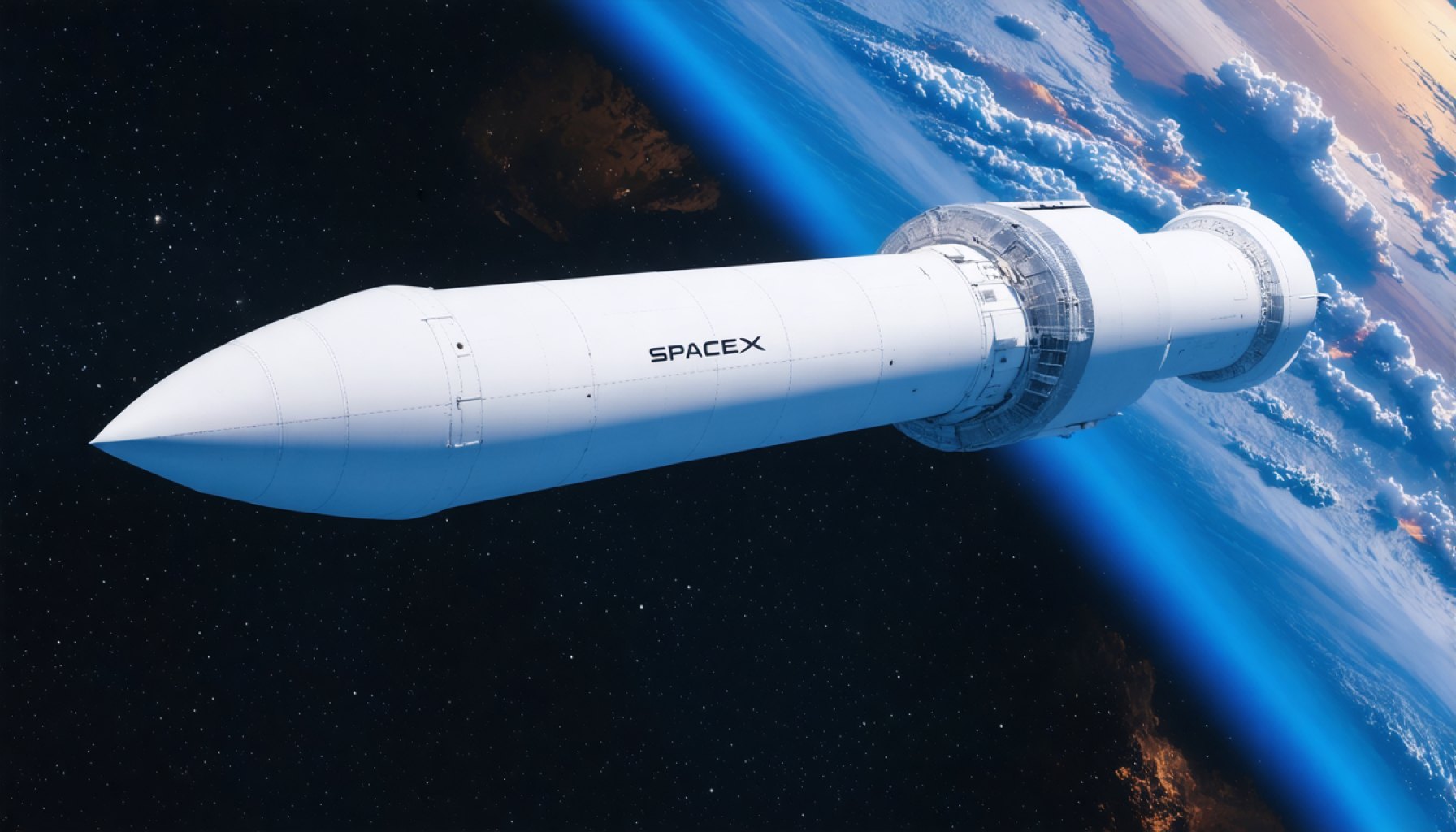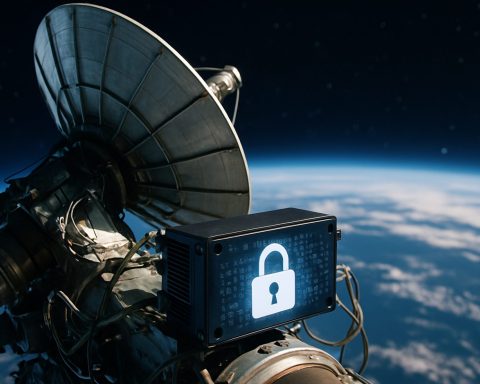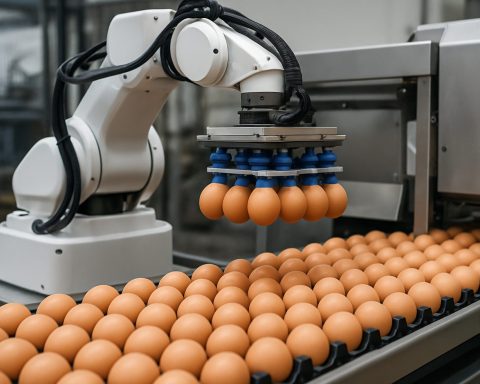- The Super Heavy booster, equipped with 33 Raptor engines, delivers 17 million pounds of thrust, illustrating the pinnacle of modern engineering.
- A recent test marked SpaceX’s first re-use of a “flight-proven” Super Heavy booster, showcasing advancements in reusable space technology.
- Standing 404 feet tall, the Starship—including the Super Heavy booster—is designed to make frequent space travel achievable.
- The successful re-use of Booster 14 signals progress toward creating a new era in reusable spaceflight, despite ongoing challenges with its upper stage development.
- SpaceX’s history of innovation, demonstrated by the success of Falcon 9 with 426 landings, bolsters confidence in overcoming future hurdles with Starship.
- The initiative reflects SpaceX’s broader mission to redefine space exploration and potentially reach Mars.
A bright plume of orange exhaust cut through the skies over SpaceX’s Starbase in South Texas, offering a spectacle that heralded both achievement and anticipation. The source of this vivid spectacle? The Super Heavy booster, an engineering marvel of unprecedented scale. Towering like a giant, it possesses a potent force capable of redefining space travel. This test wasn’t just a routine drill; it marked the first time SpaceX had ever re-fired a “flight-proven” Super Heavy booster. This achievement reflects a small yet significant step towards a larger vision—where rockets are not just launched but relaunched, reshaping our access to space.
With 33 methane-fueled Raptor engines that churn out an astounding 17 million pounds of thrust, Super Heavy stands as a testament to human ingenuity. The powerful engines harbor twice the thrust of Apollo’s Saturn V—an apex of its era. Picture the fuselage of a Boeing 747 jet standing vertically, and you get a glimpse of the enormous scale of Super Heavy. This is a piece of machinery designed not just to challenge the stars, but to make returning to them routine. At 404 feet in height, the Starship—consisting of the Super Heavy booster and its second stage—is a towering symbol of what’s possible when ambitions rocket beyond constraint.
The latest test thrust Booster 14 into the spotlight, revealing its readiness for another flight. This potential reuse of Booster 14 is a tantalizing prospect, suggesting that a new era of reusable spaceflight is racing forward, albeit with hurdles. Challenges remain, especially with developing the upper stage, affectionately known to engineers as simply “the ship.”
The stakes are high. SpaceX has a proven track record with its Falcon 9 boosters, boasting 426 landings to date. Their first successful reuse in March 2017 set a precedent that redefined launch economics. Yet, Starship elevates the company’s mission, aiming for Mars and beyond. While the Super Heavy booster has now performed admirably on eight test flights, its future flights hold the promise of paving further paths into space.
SpaceX’s history of innovation offers solace and confidence in overcoming these challenges. Their Falcon 9 rocket also once faced daunting odds before becoming the reliable workhorse it is today. The road paved by the Falcon 9 wasn’t smooth, demanding extensive refurbishments and repeated test-firings. However, those lessons from thousands of hours of labor contribute directly to the hopes pinned on Booster 14 and its successors.
This Herculean effort is emblematic of a larger mission. SpaceX isn’t just testing rockets; it’s testing humanity’s resolve to push past current boundaries. Each engine’s roar and each flicker of flame carry with them a chance at redefining our cosmic neighborhood and opening up worlds beyond. As the company’s engineers work through the challenges that come with innovation, one thing remains crystal clear: SpaceX is not merely on a journey to space—it’s on a journey to redefine it.
SpaceX’s Super Heavy Booster: A New Era in Reusable Space Exploration
Introduction
SpaceX has once again captivated the world with a mesmerizing test flight at its Starbase in South Texas. This achievement was not just another routine exercise; this time, it was a “flight-proven” Super Heavy booster launching in a bright plume of orange, a symbol of pioneering efforts in space technology. The significance of this milestone speaks to a vision beyond immediate triumph, promising to redefine reusable launch systems and broaden humanity’s access to space.
Unveiling Super Heavy: Engineering Marvel and Space Exploration
The Super Heavy booster is a remarkable feat of engineering. Powered by 33 Raptor engines, it generates an extraordinary 17 million pounds of thrust, more than double that of the legendary Apollo-era Saturn V rocket. Standing at an imposing 404 feet—the combined height of the booster and its second stage, the Starship—Super Heavy is built to challenge and alter the current norms of space travel, making returning launches as routine as liftoffs.
Pressing Questions and Details Unexplored
What Makes the Super Heavy Booster Unique?
– Raptor Engine Efficiency: The methane-fueled Raptor engines make Super Heavy more efficient than its predecessors. These engines are designed not just for raw power but for sustainable and reusable operation, a departure from conventional liquid oxygen (LOX) and RP-1 (refined kerosene) engines.
– Reusable Design: Following the success of the Falcon 9’s 426 landings and first reuse in March 2017, Super Heavy seeks to further the possibilities of reusable spaceflight, significantly cutting launch costs in the long term.
Real-World Use Cases and Implications
– Space Travel Cost Reduction: By reusing boosters like Super Heavy, the cost of launching scientific, commercial, and exploratory missions could decrease dramatically. This development can democratize access to space, allowing more parties to partake in space exploration.
– Mars Colonization: The Starship, which works in tandem with the Super Heavy booster, is central to SpaceX’s Mars ambitions. The success of reusable vehicles is crucial for establishing a sustainable human presence on Mars.
Challenges and Future Predictions
Controversies and Limitations
– Environmental Concerns: The use of methane—although a cleaner alternative to traditional fuels—still raises environmental concerns, particularly about leaks and its greenhouse gas potential.
– Technical Hurdles: The development of the upper stage, or “the ship,” poses challenges that must be overcome to realize the full potential of SpaceX’s space exploration goals.
Industry Trends
– Reusability of rockets is a growing trend across the industry, with multiple companies like Blue Origin and Rocket Lab pursuing similar technologies to drive down costs and improve efficiency.
Pros and Cons Overview
Pros:
– Cost Efficiency: Dramatically reduces the cost of space travel.
– Technological Innovation: Paves the way for more ambitious exploratory missions.
– Scalability: Designed for larger payloads and complex missions.
Cons:
– High Initial Costs: Significant investment in research and development.
– Risk of Failures: Each new technology phase bears risks that could delay progress.
– Environmental Impact: Methane as a fuel is a step forward but still presents environmental challenges.
Actionable Recommendations
– Stay Updated: Follow credible space exploration news sources such as Nasa and SpaceX for the latest updates.
– Educate and Advocate: Understanding and advocating for reusable technology benefits may prompt broader eco-friendly innovations in other sectors.
– Investment Opportunities: Companies focusing on sustainable technologies and reusability in space exploration could represent lucrative investment opportunities.
SpaceX’s journey exemplifies the intersection of innovation and audacity in human endeavors. As progress with the Super Heavy booster and Starship continues, the dream of affordable, routine space travel and eventual planetary colonization edges closer to reality.







